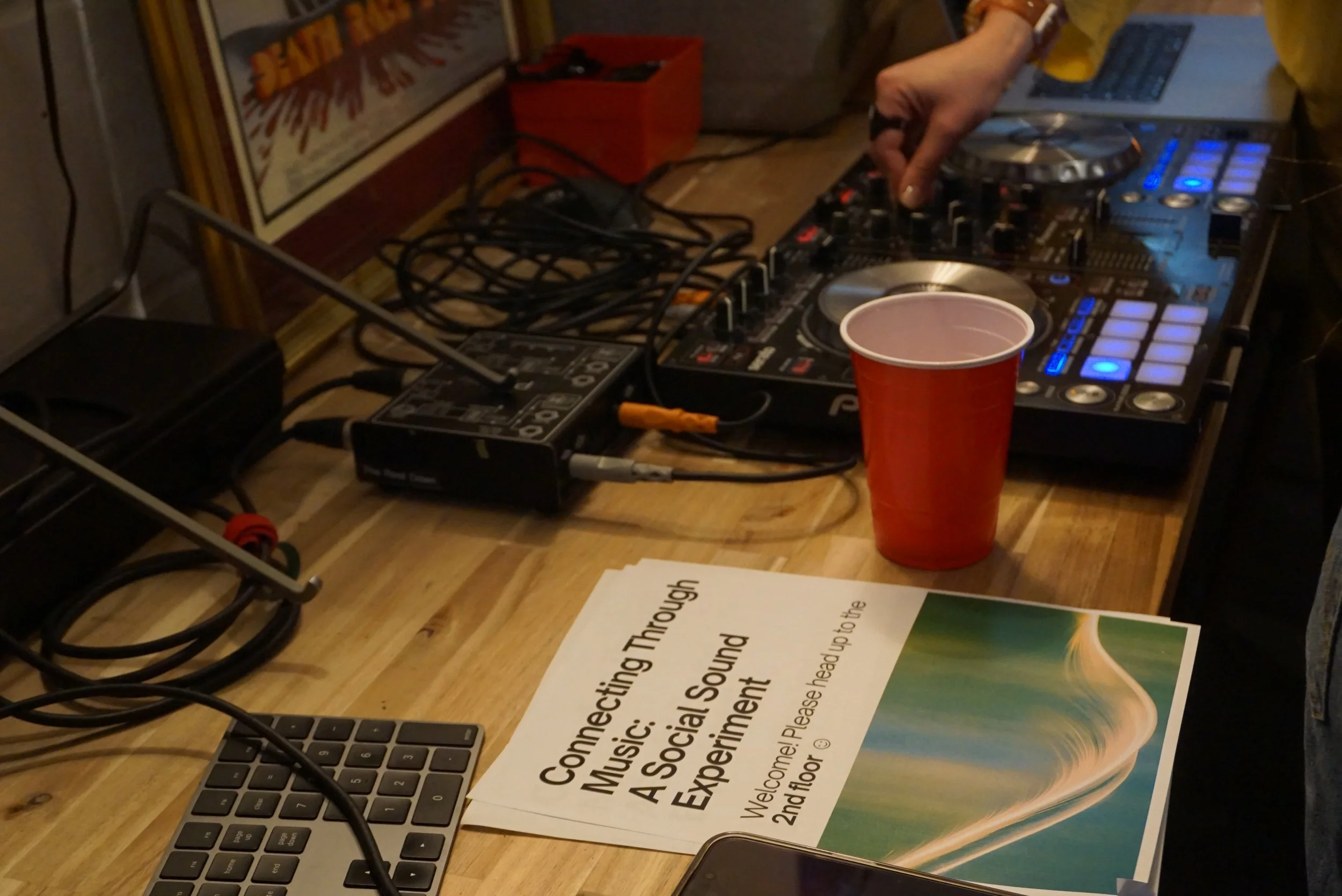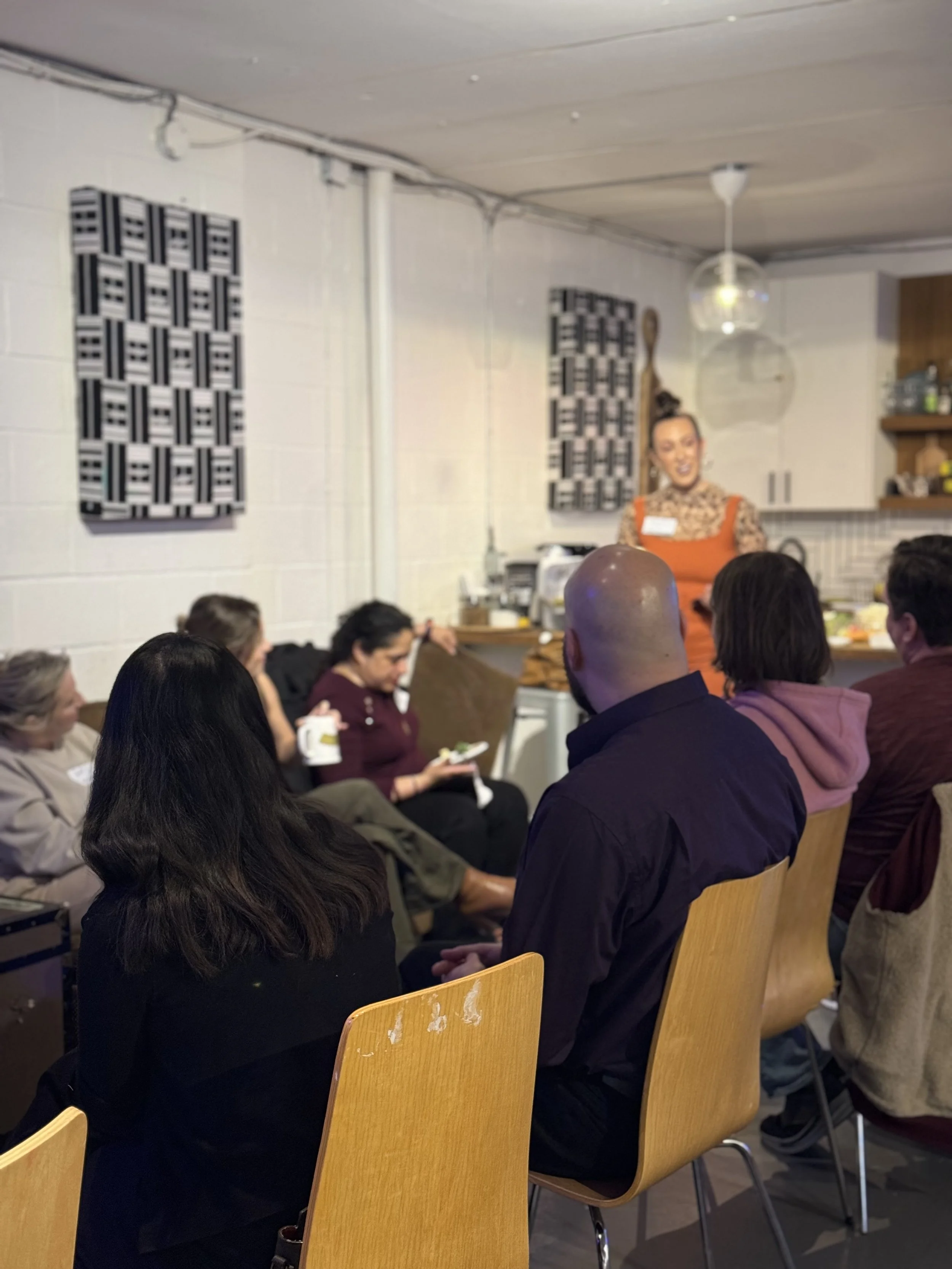Can Sound Bring Us Closer Together? Insights From a Sound-Based Social Experiment
Today, the world can feel more divided than ever. Differing opinions, political beliefs and lived experiences create real barriers to connection. Earlier this year, I set out to test a simple but powerful idea: could sound serve as a bridge - a way to connect people who might otherwise feel worlds apart?
That’s how Connecting Through Music began - a series of four sound-based social experiments designed to examine how music influences connection, presence, and awareness. Across these sessions, approximately 80 individuals participated. This was a self-funded, independent research project with a grassroots design: participants were recruited through Eventbrite, social media, posters around the city, and word-of-mouth. Every gathering reached capacity and was waitlisted, suggesting that this question resonates widely: can sound connect us in new ways?
In this post, I want to share the results from two sessions that specifically examined music and human connection.
Image credit: Kübra Bozdağ
The Experiment: Eye Contact in Silence vs. Eye Contact with Music
In this experiment, participants paired up for sustained eye contact - first in silence, then with music. Each round lasted exactly 4 minutes and 37 seconds.
Round One: Silence
Without music, the results were mixed. Some participants reported feelings of connection and curiosity, while others described the exercise as awkward, nerve-wracking, or uncomfortably long.
Reported emotions included calm, curiosity and vulnerability, but also nervousness and self-consciousness.
Physiological responses included increased heart rate and muscle tension.
More than half of participants reported that the exercise felt longer than expected, suggesting that in the absence of sound the task required greater mental and emotional effort.
Round Two: With Music (here’s the song if you’re curious!)
When the exercise was repeated with music for the same duration, participants reported clear differences.
Connection ratings shifted upward - the average rose from ~6.6/10 in silence to ~7.7/10 with music. While not everyone rated the experience a 9 or 10, many more participants did so compared to silence, where no one reached a 10.
Comfort levels also improved. Participants described the experience as more relaxing, joyful and emotionally engaging.
Slower breathing was the most consistent physiological response, reported by nearly all participants. Others noted bodily warmth, tearfulness and a softening of facial or chest tension.
Time perception also changed - most participants said the exercise felt “just right” in length, or even shorter than expected.
What This Suggests About Music and Connection
The presence of music did more than enhance the atmosphere - it appeared to create both a physiological and emotional container for connection. Participants described the effect in their own words:
“Like giving the moment a soundtrack - depth and meaning.”
“Grounding and safe.”
“Helping me stay present instead of worrying what my partner was thinking.”
In other words, music transformed sustained eye contact from a potentially uncomfortable endurance task into a shared experience of empathy, presence and resonance.
Why This Matters
The findings indicate that music can:
Regulate physiology - supporting slower breathing, reduced tension, and steadier presence.
Influence time perception - shifting experiences from “too long” to “appropriately timed.”
Facilitate empathy and connection - allowing participants to remain present in moments of vulnerability.
Sound is more than background noise or entertainment - it is an active connector. It shapes how we perceive ourselves, others and the relational space between us. In this context, music did not simply change what participants felt; it changed how they could be with one another.
Beyond the Experiment: Sound, Anxiety and Co-Regulation
One of the clearest patterns in this experiment was the shift in breathing. When music was present, participants consistently reported slower, steadier breath. This wasn’t only about individuals calming themselves - it was an example of co-regulation in action.
Co-regulation is a concept from neuroscience and psychology that describes how our nervous systems influence and regulate one another in shared environments. It’s the reason a baby calms when held by a parent, or why being around someone who is grounded and steady can help ease our own anxiety. In this case, music provided a shared external rhythm that both partners could attune to, allowing their bodies to settle together.
This matters because anxiety often produces the opposite pattern - breath quickens, time feels stretched and the system becomes hyper-alert. What emerged here is that sound helped reset that pattern. With music, participants reported calmer breathing, greater ease in their bodies and an increased capacity to remain present in a vulnerable exercise.
For me, this highlights something essential: sound can act as a tool for regulating anxiety, not just individually but collectively. It helps create a physiological environment where connection feels safer and more accessible.
A Larger Inquiry
The eye contact and music experiment was just one part of this broader series. Across the four experiments, two examined music and human connection (presence, empathy, shared attention), while the other two explored music and the listening experience (how different environments shape perception).
Each session combined a sound-based exercise with facilitated discussion, allowing participants to share their observations.
For me, these sessions are part of an ongoing inquiry: how can sound be used intentionally to support connection, well-being and community? In a time when so many forces pull us apart, this research points to something simple but profound: sound can unite us.









